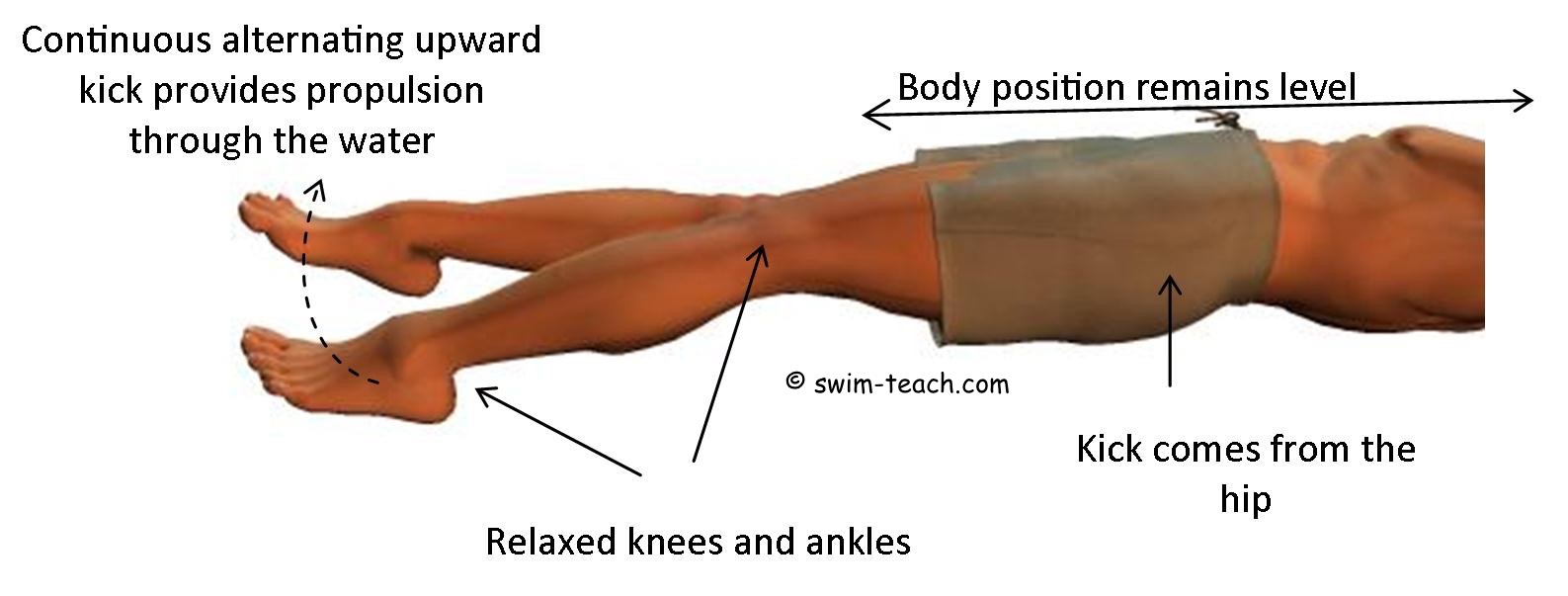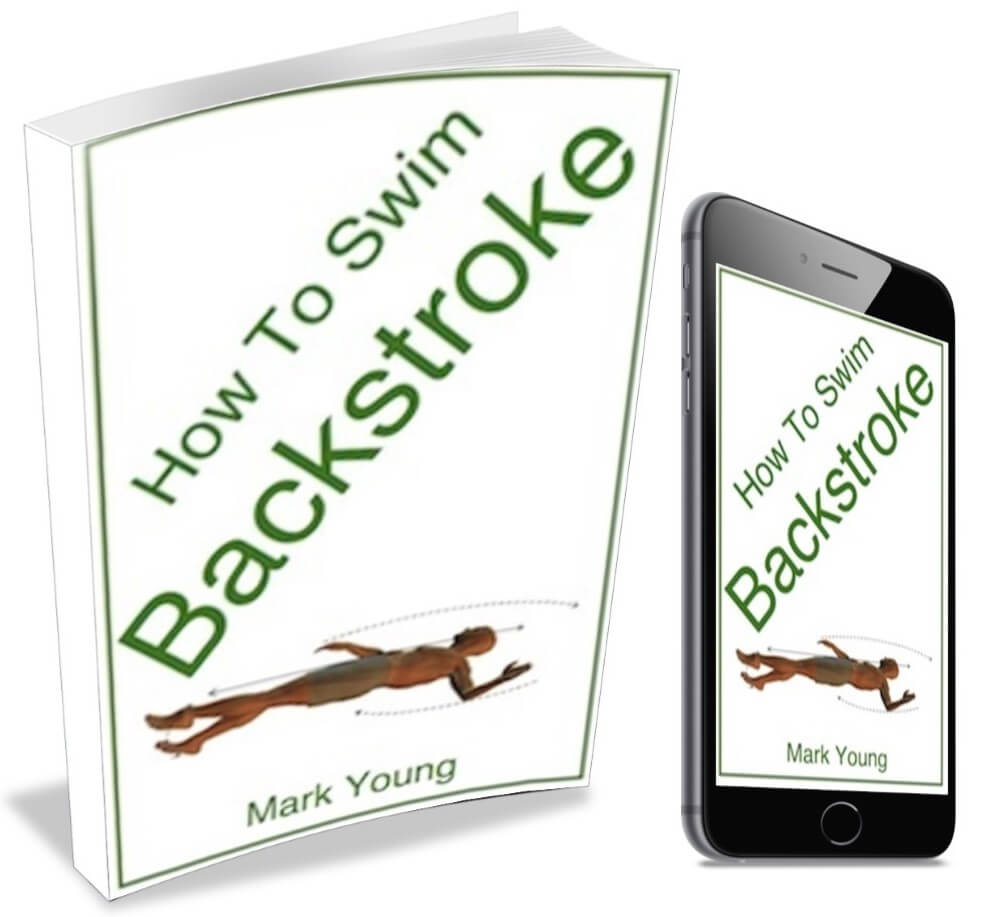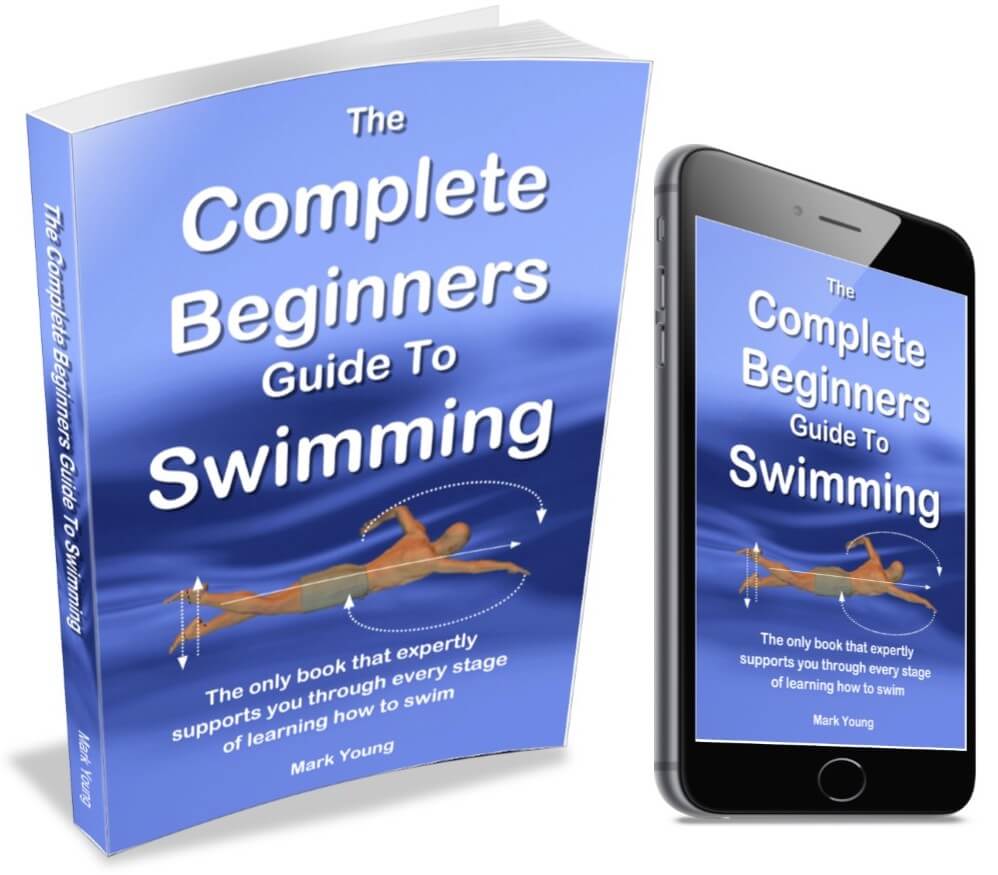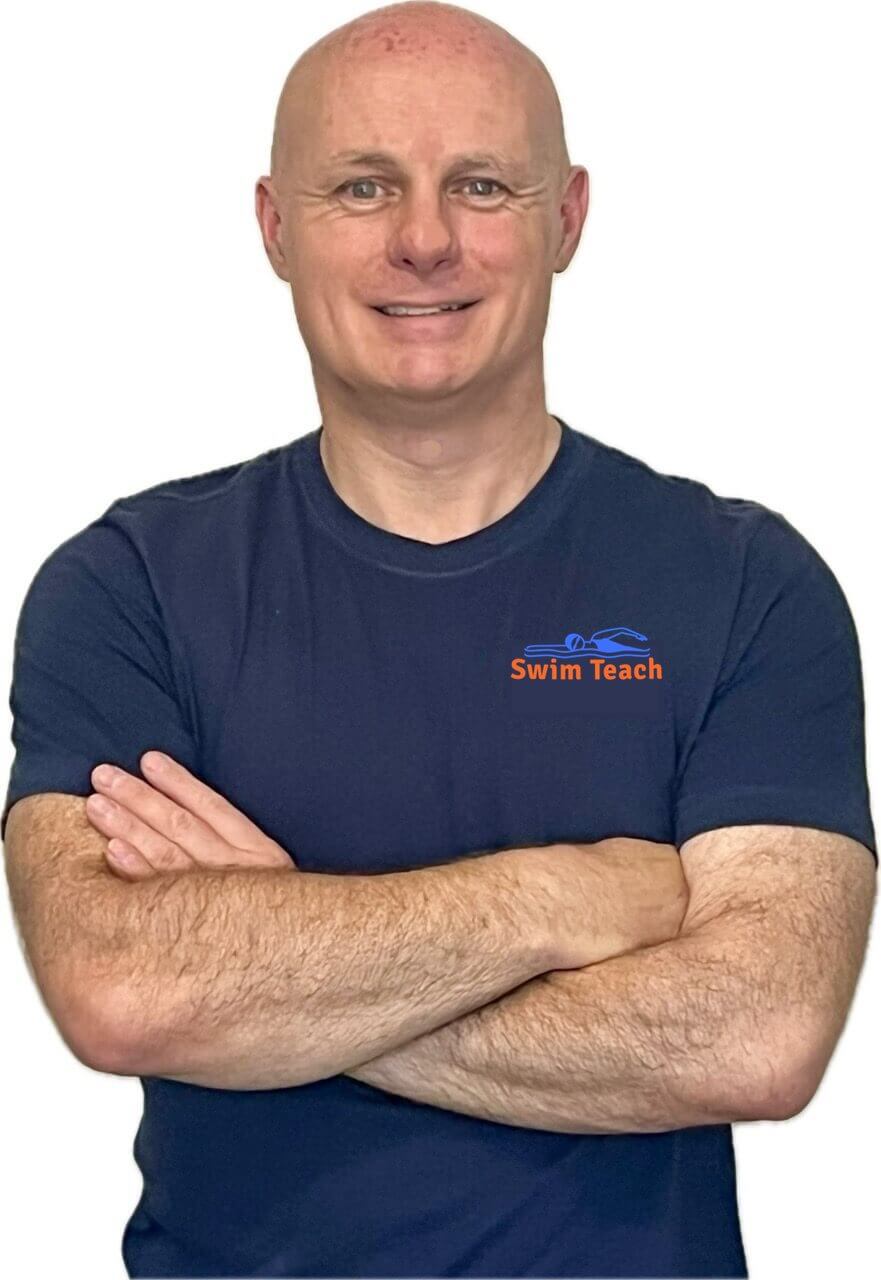- Swim Teach Home
- backstroke technique
- Backstroke Kick
- Backstroke Swimming
Backstroke Arm Action
Why is it necessary for your arms to enter the water at 11 and 1 o'clock during backstroke arm action?
Your assumption of an 11 and 1 o’clock entry is not quite correct. For backstroke arms to be efficient and effective, the entry must be in line with the shoulder, with the upper arm brushing the ear. Using your visual analysis, that would make it about parallel to 12 o’clock.
For the arm pull to have maximum effect, it must pull through almost 180 degrees. The little finger and side of the hand cut its entry into the water to begin the propulsive phase. Propulsion then occurs as the arm pulls through 180 degrees to the hip.
If the arms were to enter the water at 11 and 1 o'clock, there would be a loss of power due to having less water to pull through, and the wider entry would make the whole body less efficient through the water. For a more detailed analysis of backstroke arm action click here.
Kicking Backstroke I Move In The Opposite Direction
When kicking backstroke, I move in the opposite direction than I should, counteracting arms movement. So far, no swim coach could tell me what I am doing wrong. I do ok with fins (short red zoomers). Crawl and breast strokes are no problem. My ankles are not very flexible but thank you for your help.
What you are describing, I have seen many times. There are two common causes, and I suspect you are doing one or a combination of both.
I will assume that your body position is correct - by that, I mean flat and horizontal with chest and hips near the water's surface.

Firstly, the kick for backstroke must come from the hip so that the whole leg performs the up and down action when kicking. A common mistake is to kick from the knee, which can lead to a cycling-type action. As you describe, this almost always results in movement in the opposite direction.
Try sitting on the poolside, legs outstretched into the water, and practice kicking. Use a small, shallow kick and watch to ensure you kick from your hips. If necessary, kick your knees locked out in an almost robot-like motion to exaggerate the action and get a feel for it. This is technically incorrect, but it can sometimes help to identify and correct an old bad habit. As you get used to kicking from the hips in this position, relax the knees and ankles to allow for a slight bend and a relaxed kicking action.

Secondly, the backstroke kick must have a relaxed ankle joint so that propulsion can be generated from the upward kick as the foot flicks up to the water's surface. The toes must break the water surface with each kick to ensure that the kick is not too deep.
You mention that you do not have very flexible ankles and do okay with fins. You may, in some ways, have answered your question here. The fins provide good propulsion because they are flexible and provide sufficient surface area against the water as they kick. Therefore when you are kicking without the help of fins, your foot has to do its best to replicate the action of the fins. In other words, the toes must be pointed, and the top of your foot (where your shoe laces would be) should be the part that generates the propulsion as it kicks upwards through the water to the surface.
As your ankles are not very flexible, you may have to bend your knee slightly more to compensate for this to allow your foot's top surface area to be correctly exposed to the water. Now, this may sound like I’m contradicting myself by advising you to bend your knees, but for someone that has limited ankle movement, you are going to have to adapt your kick to find a compromise.
Either way, I hope by explaining some things to you, I have helped you understand the backstroke kick a little better, which, in turn, helps you identify some potential areas for improvement.
With all this said, there is no harm in swimming for periods with fins on your feet (including front crawl), as the action of the fins could help to increase the flexibility of your ankle joints.
I wish you the best of luck.
HOW TO SWIM BACKSTROKE EBOOK: everything you need to master breaststroke swimming stroke. 20 easy drills that focus on each part of backstroke technique. From body position to breathing and timing. Decades of teaching experience all packaged into 1 easy file. Download to your device and master backstroke TODAY! (click here for a preview)
Don't miss out! Click here for more details on how to get your copy.
How does in-toeing aid propulsion?
How does in-toeing aid propulsion during backstroke leg kick?
Good swimming is all about efficiency through the water and good efficiency is achieved with a streamlined body position.
In-toeing aids propulsion by reducing drag and resistance and assists to promote a streamlined body position.
When an object or body moves through the water, whether it is pushed, pulled or driven, it leaves behind swirls of water called Eddy Currents. These eddy currents attempt to pull back the moving object therefore causing drag.
Eddy currents are always present no matter how efficient the moving object is through the water but the narrower and more streamlined the object, the less effect eddy currents have.
An in-toeing backstroke kick will therefore be more streamlined and generate less drag.
With regards to propulsion, in-toeing may not increase propulsion but will assist it by decreasing drag.
Turning Over From Backstroke to Front Crawl
Is there an easy way of turning over from backstroke to front crawl or breaststroke? I seem to have a problem with this.
There is no actual technique for turning over from backstroke to swimming a stroke on your front, but I completely understand your frustration on this one.
You probably turn from back to front and feel it is the most untidy and clumsy movement of your swimming!
A' log roll' is the best way to describe the kind of movement you need.
As you swim on your back performing your backstroke, your body position is long, flat and horizontal (assuming your technique is correct).
Your backstroke arms will pull one after the other, so one arm will always be out of the water or stretched out along the side of your head.
Perform your log roll either with one arm by your head and one by your side or with both arms by your sides, whichever is most comfortable for you.
When you roll, you must ensure you do not bend your knees up, do not raise your head out of the water and do not let your hips sink. In other words, maintain your long, flat stretched position and simply roll onto your front.
From there, you can begin to swim whichever swimming stroke you wish to do from there.
The log roll is the best way to move from back to front or indeed from front to back quickly and decisively, whilst at the same time maintaining stability in the water.
The moment you raise your head, bend your knees or allow your hips to drop, the result will be that unstable sinking feeling!
Maintain a flat position for a smooth transition from back to front and this will maintain the rhythm of your swimming stroke.
The Must-Have Swimming Book for Beginners
I am a member of the Amazon Associates Program and I will earn a commission from qualifying purchases at no extra cost to you.





